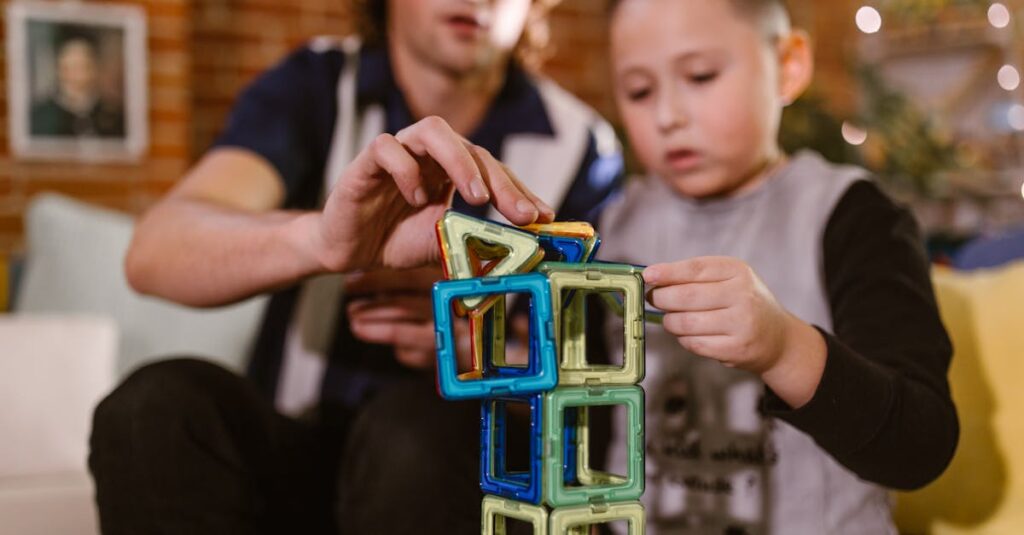What’s Faith Anyway?
Explaining faith to a preschooler may sound like trying to catch a puff of smoke. Faith is a big concept even for adults! It’s all about having trust and belief in something you cannot see. Just like when your kiddos trust that a crayon will color a page.
To make it relatable, think of faith as believing in a promise or an unseen outcome. Start with simple, loving stories where trust plays a key role, making sure that your little one gets the message through fun narratives.
It’s not about making them faith experts but sparking curiosity and comfort in the unknown.
Floating Questions: Faith with Balloons
Imagine telling kids about faith using balloons. Start by explaining that balloons, when filled with air, rise up high. When they’re empty, they fall. Faith in life is like seeing a balloon rising even when we can’t physically see the air inside.
Inflate a balloon and let it float, explaining that like the invisible air, faith helps lift us. This visual can strike a chord and spark questions from curious minds. Who knew a simple balloon could be so enlightening?
Remember to let go of the balloon as a metaphor for letting go and trusting the process.
Seeds of Faith: A Planting Project
Grab some seeds and potting soil for this object lesson. Let preschoolers plant seeds and explain that faith is believing these tiny seeds will grow into plants. Even when they can’t see the plants immediately, something magical is happening underground!
Water and sunlight are crucial, just like love and kindness in nurturing faith. As the plants grow, so will their understanding of how faith can result in beautiful outcomes.
Plus, watching their plant grow is rewarding, encouraging patience and perseverance. Who doesn’t love seeing a tiny greenery miracle unfold?
Rock Solid Faith: Building on Lego
Using building blocks like Lego can turn a play session into a faith lesson. Ask kids to build a tower, trusting that each block added will create a stable tower if placed correctly. As they build, talk about how every block is like an act of faith; even though it might wobble, we believe it will stand firm. This activity reinforces the idea that faith is sturdy when laid on a solid foundation.
Plus, you’ll be surprised at how a simple game can bring out some profound contemplation from little builders!
Key Takeaways:
- Building Trust: Each Lego block symbolizes an act of faith.
- Foundation Matters: A stable tower represents a strong faith foundation.
- Engagement through Play: Simple games can lead to deep conversations.
Sweet Faith: Marshmallow Experiments
Time to head to the kitchen with marshmallows for a sweet faith experiment!
Ask your child to make predictions about what happens when a marshmallow is placed in water. Will it sink or float?
The marshmallow floats, confidently defying expectations, just like faith can sometimes surprise us. This immersive experience offers kids a sweet taste of the unexpectedness of faith.
Plus, who wouldn’t love the gooey reward of marshmallows at the end of an enlightening experiment?
Remember: Faith can sometimes feel as unpredictable yet delightful as a marshmallow adventure.
Summing Up Faith: Laugh, Learn, Love
At the end of these engaging lessons, make sure to wrap up what your preschoolers have learned in a simple chat. It’s about making faith less of an incomprehensible philosophy and more of a relatable and tangible idea as sturdy as Legos, growing like plants, and as sweet as marshmallows.
Encourage them to ask questions and share their feelings, creating an open dialogue that strengthens understanding and bonds. Humor, patience, and lots and lots of love will keep this journey fun and insightful, setting kids on a path where faith becomes a natural, comforting friend.
Key Takeaways:
- Wrap up lessons with a simple discussion.
- Make faith tangible and relatable.
- Encourage questions and sharing of feelings.
- Maintain humor, patience, and love throughout the journey.

